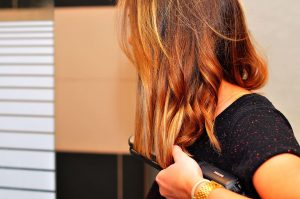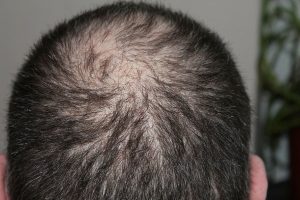What is Static Hair?
In winter it can be quite challenging to keep your hair in shape. If it is not the rain or the wind, your hair will be raised because it is static. Your hair will crackle while brushing and will stick to your face when you take your hat off. The cold and dry air can cause your hair to go in all directions. Gone is your beautiful winter coupe…
How does static hair form?
 Ready for a short physics lesson? You don’t notice, but all day long your hair (and skin) absorbs electrons. In the summer, the air is damp, leaving a thin layer of water over your hair. Water conducts electricity. The small layer of water ensures that the electrons flow away from your hair, back into the air. The air is dry in winter. This keeps the electrically charged particles on your hair, resulting in static hair.
Ready for a short physics lesson? You don’t notice, but all day long your hair (and skin) absorbs electrons. In the summer, the air is damp, leaving a thin layer of water over your hair. Water conducts electricity. The small layer of water ensures that the electrons flow away from your hair, back into the air. The air is dry in winter. This keeps the electrically charged particles on your hair, resulting in static hair.
What can you do about static hair?
Do you want to prevent static hair, without having to cut your hair or hide it under a large hat? We have listed a number of tips for you:
Tip 1: conditioner is your best friend
Dry hair becomes static more quickly. A nourishing conditioner brings moisture to your hair. This makes your hair not only super soft, but also less static.
Tip 2: a spray of hairspray on your brush or in your hat
Hairspray works wonders. Spray a little hairspray on your brush or comb before you start using it. A spray of hairspray in your hat also ensures that your hair does not stick to your hat when you take it off.
Tip 3: avoid synthetic and woolen clothes
Synthetic and woolen clothes will make your hair static even faster. These materials are already static in themselves. So make the right choice of clothing and wear cotton, for example.
Tip 4: hand cream is the lifesaver
 Coat your hands with hand cream . Leave it on for a while and then run your hands through your hair. This way your static hair will be discharged in no time . No hand cream on hand? Then wet your hands with water and run it through your hair.
Coat your hands with hand cream . Leave it on for a while and then run your hands through your hair. This way your static hair will be discharged in no time . No hand cream on hand? Then wet your hands with water and run it through your hair.
Tip 5: leave your hair dryer or straightener in the cupboard for a while
You probably don’t want to hear this, but it’s really better not to blow-dry or style your hair. This dries out your hair. Can’t you live without your hair dryer or hair straightener? Then set it to the lowest possible temperature.
Tip 6: don’t wash your hair too often
Here we go again, don’t dry your hair. By washing it often, your hair loses its moisture. Try to gradually reduce the number of washes, so that you don’t suddenly have to take a ‘deep-frying fat’ section on the street.
…
 Male pattern baldnessis one of the most common forms of hair loss. This type of hair loss is often thought of as a hereditary form of baldness. In men, this type of hair loss is mainly on top of the crown and at the temples. You may not expect it, but this form also occurs in women. In women it is limited to thinning the hair on the crown.
Male pattern baldnessis one of the most common forms of hair loss. This type of hair loss is often thought of as a hereditary form of baldness. In men, this type of hair loss is mainly on top of the crown and at the temples. You may not expect it, but this form also occurs in women. In women it is limited to thinning the hair on the crown.


